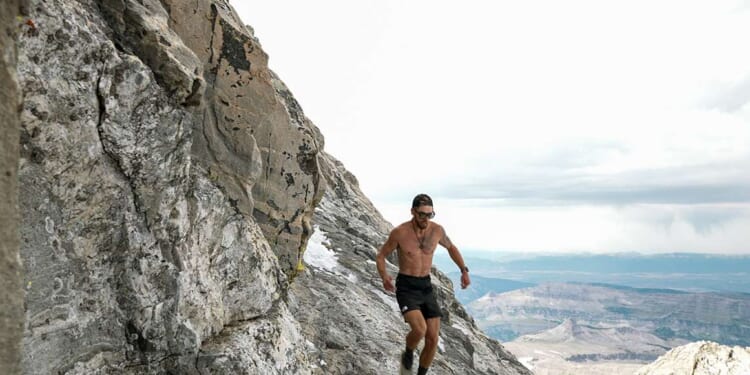When mountain runner Michelino Sunseri climbed and descended Wyoming’s Grand Teton in record time last year, he posted information about his route on social media. According to the Justice Department, Sunseri thereby implicated himself in a federal misdemeanor punishable by up to six months in jail.
The National Park Service, which initially recommended that Sunseri be prosecuted for his seemingly inadvertent use of an unapproved trail, reconsidered that referral in May. But the U.S. Attorney’s Office in Wyoming was unfazed. Its puzzling prosecutorial persistence provoked criticism from two members of the House Judiciary Committee, who said it epitomized “the problem of overcriminalization.”
Reps. Harriet Hageman (R–Wyo.) and Andy Biggs (R–Ariz.) suggested that Sunseri’s prosecution violated President Donald Trump’s May 9 executive order urging restraint in deploying criminal penalties for regulatory violations. That order, Hageman and Biggs noted in a July 17 letter to Stephanie Sprecher, the acting U.S. attorney for Wyoming, expressed concern about “technical and unintentional regulatory violations that may expose individuals to criminal penalties for conduct they did not know was prohibited.”
The fact that Sunseri advertised his route strongly suggests he did not realize he was breaking the law. And as WyoFile noted after Sunseri’s bench trial in May, the path that the park service said he should not have taken is “a historic trail so well-used that it’s become a skinny singletrack.”
Cato Institute legal fellow Mike Fox notes that “only two tiny and ambiguous signs inform the public that the trail is off-limits.” One of those signs, at the top of the trail, said “shortcutting causes erosion.” The other sign, at the bottom of the trail, said “closed for regrowth.”
Defense attorney Ed Bushnell argued that Sunseri was not “shortcutting,” since he was using a long-established trail. Bushnell added that it was unclear whether the “closed” notice referred to the area around the sign or the trail beyond it. “There is no clear prohibition there,” Bushnell said. “This is not conspicuous signage.”
After Sunseri was cited for using a prohibited trail, Hageman and Biggs said, he “took responsibility for his actions, expressed regret, and volunteered to help officially close the alternate path, which receives regular foot traffic.” Federal prosecutors filed criminal charges anyway, and their plea deal offers were onerous given the nature of the violation.
Sunseri’s case illustrates the traps set by a code of federal regulations so vast and obscure that even experts can only guess at the number of criminal penalties it authorizes—at least 300,000, they think. While hacking away at that thicket of prohibitions is a daunting task, the least federal prosecutors can do in the meantime is exercise some commonsense discretion.
This article originally appeared in print under the headline “6 Months in Jail for Mountain Running?.”















